You have never heard of Rasim Babayev? In the West, the artist is still relatively little known. Reason enough for us to introduce you to the exceptional Azerbaijani painter in a portrait.
Rasim Babayev’s early years
The Baku-born expressionist painter Rasim Babayev was the best-known representative of the independent Abşeron group of artists and for many years the enfant terrible of the Azerbaijani art scene. Highly decorated at the end of his life, the folk artist studied at the State Art School in Baku in 1945 and 1949 and moved to Moscow in the early 1950s.
Disappointed return from the capital
The place of longing that Moscow had represented for him until then was soon to turn out to be a disappointment. Contrary to expectations, he did not get to see any art in the Pushkin Museum, but only all the guest gifts that had been given to Stalin. In 1956 he was accused of “formalism,” an overly generous interpretation of the autonomy of form, and denied a degree. As a result, he turned his back on the capital of the USSR, to which Azerbaijan still belonged at the time, and moved back to Baku, where he became a member of the Artists’ Association of Azerbaijan as early as 1959.
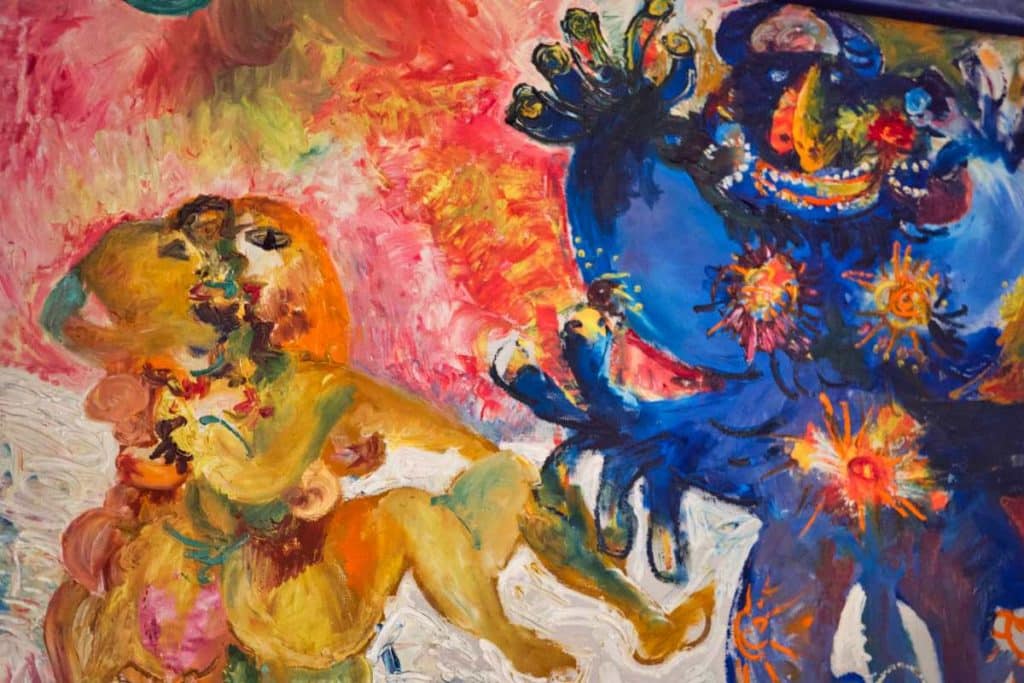
From black and white graphics to colorful goblins
Babayev’s prolific career as an artist began in the 1960s with black-and-white prints as book illustrations. Only in a later creative phase did color enter his work, and he created garishly colored oil paintings or watercolors of obscure, horned, div-named goblins and all manner of other mythical creatures.
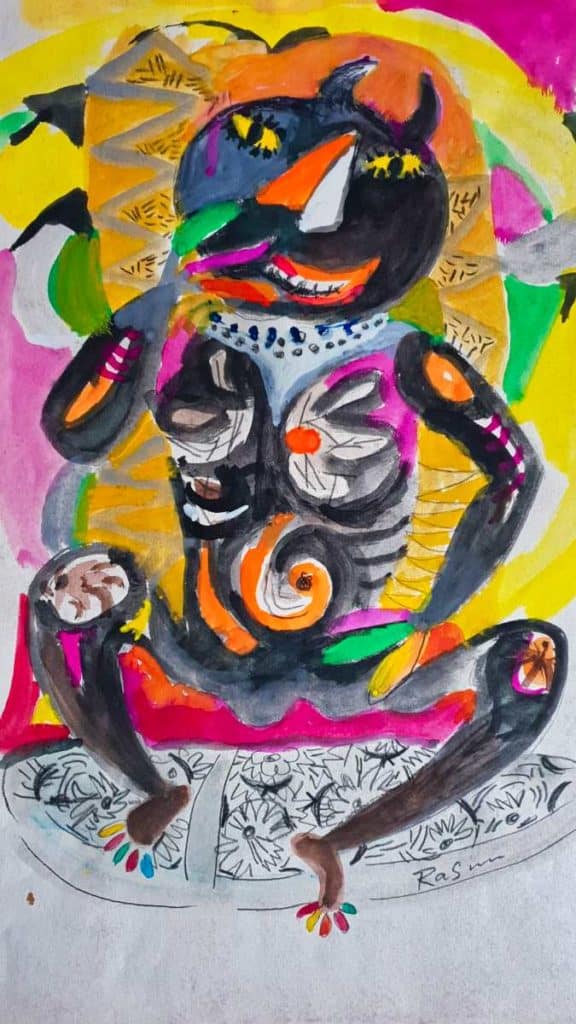
Hidden criticism in the form of demons
Even as a child, evil had fascinated him. Diabolical figures appeared in local fairy tales, but then haunted him in his dreams. He only admitted reluctantly, that the Soviet rulers later hid behind the colorful devilish creatures in his paintings. When state guests were expected in Baku, his eccentric paintings, executed with pasty strokes, disappeared briefly from museums because his motifs were perceived as too subversive for those in power. Many of his paintings were not exhibited at all. Babayev was subtly critical of the regime and steadfastly refused to paint portraits of important leaders.
An independent mind
When he sometimes accepted commissions for financial reasons, he used a separate color palette. In his works, he neither addressed the advancing industrialization in Azerbaijan, nor did he sign petitions in which representatives of the intelligentsia such as Boris Pasternak or Andrei Sakharov were to be pilloried. Babayev remained a contentious, independent spirit.
Resistance to Socialist Realism
The official doctrine of Socialist Realism decreed from Moscow, a style that propagated closeness to reality and suppressed any form of abstraction and aestheticization, made Babayev a representative of “primitivism”. This latently disrespectful term was used to describe abstract folk art with wild animals and opulent colors, but without pictorial perspective.
This style was only tolerated but not appreciated in Soviet times, even though Babayev created a whole parallel universe around the two antagonists “good” and “evil”.
Creative phase in the 80s
In his paintings, marked by classical drama and emotional moments, dying white dragons sometimes appeared to symbolize the fall of the Soviet Union. Many of his abstract tableaus depicted the devil-like fellows with two or more faces, arms, fingers, and heads. The term “the Caucasian Picasso” did not come by chance. In the 1980s Babayev’s art became more popular and visible, he experienced a political and ideological renaissance and left behind an oeuvre that was also impressive in terms of its scope.
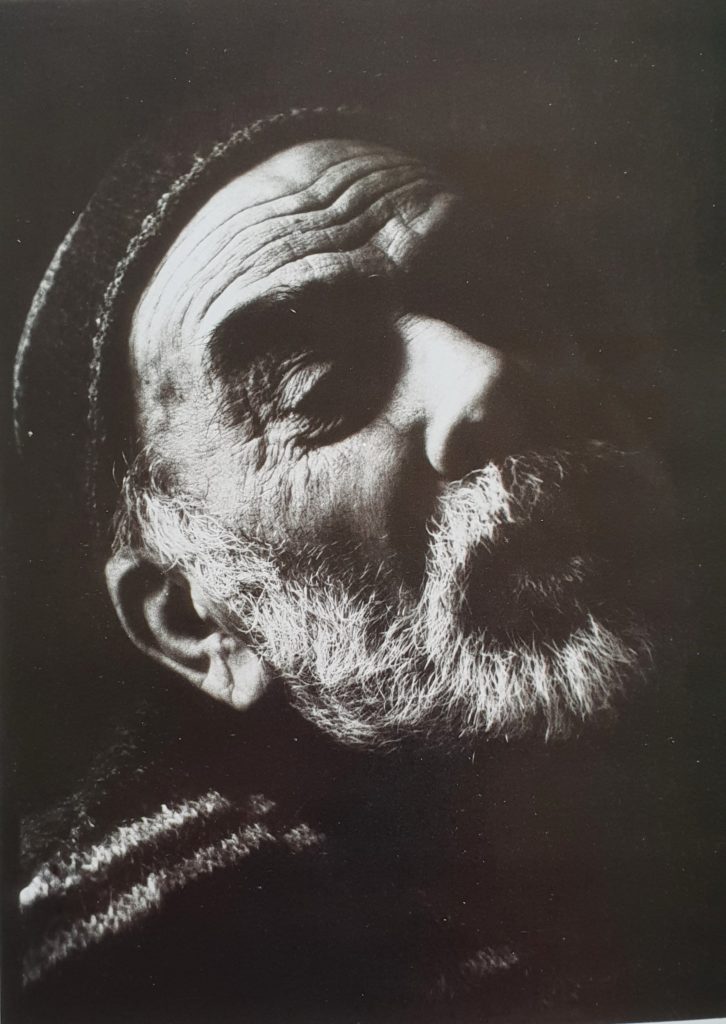
Late years and death
In 1991, Rasim Babayev’s long-held dream of seeing his country’s independence came true. “My paintings are my children, if I didn’t have to in order to live, I wouldn’t sell any of them” he said in the late 1990s. When he died shortly before his 80th birthday in 2007, he believed that his homeland would have a bright future.
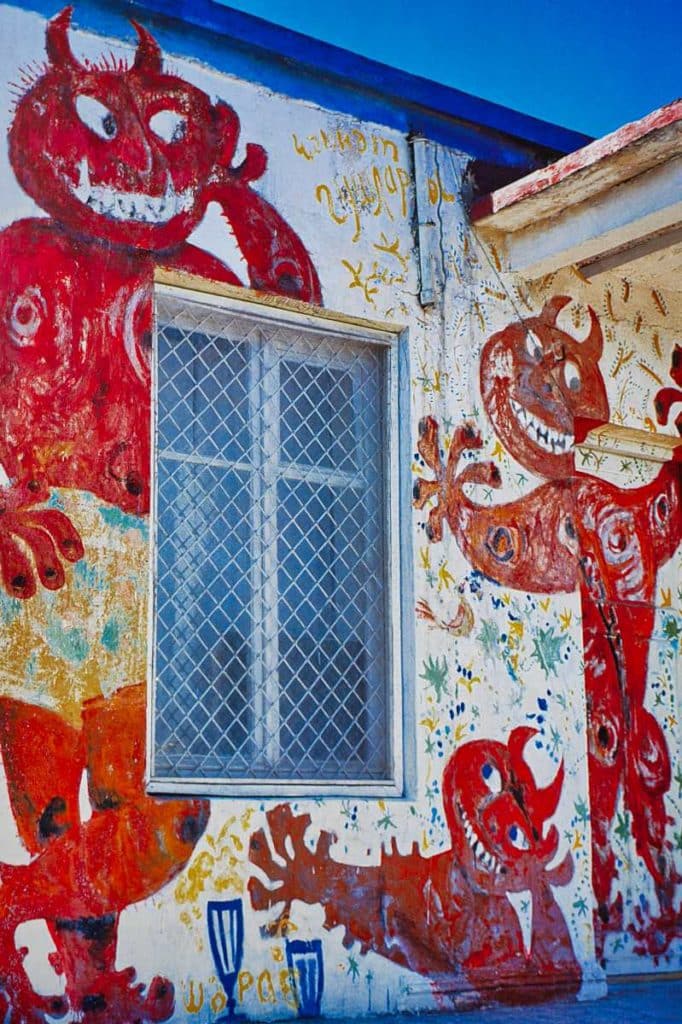
Babayev’s Legacy
Today, his son Elnur Babayev lives in his father’s artist house in Bilgah on the Caspian Sea not far from Baku. He follows in the footsteps of his famous father and works as a painter and photographer. In the desert garden specially created by his father, monsters and fairy-tale creatures cavort. The famous devils can even be found on the walls of the house, surprisingly in harmony with Adam and Eve.
Rasim Babayev is considered one of Azerbaijan’s most important artists of the 20th century. In 2008, a gallery in New York showed his drawings, and in 2014 there was a major retrospective at the Russian Museum in Saint Petersburg. Babayev’s work can now be found in museums and galleries in Azerbaijan, Russia, the United States, and France. Some particularly high-profile paintings are on view at Villa Petrolea in Baku. This is the former villa of the Nobel brothers, who settled in Azerbaijan during the oil boom, built drilling rigs and the world’s first oil tanker, and were instrumental in the development of the oil industry in the Caucasus.
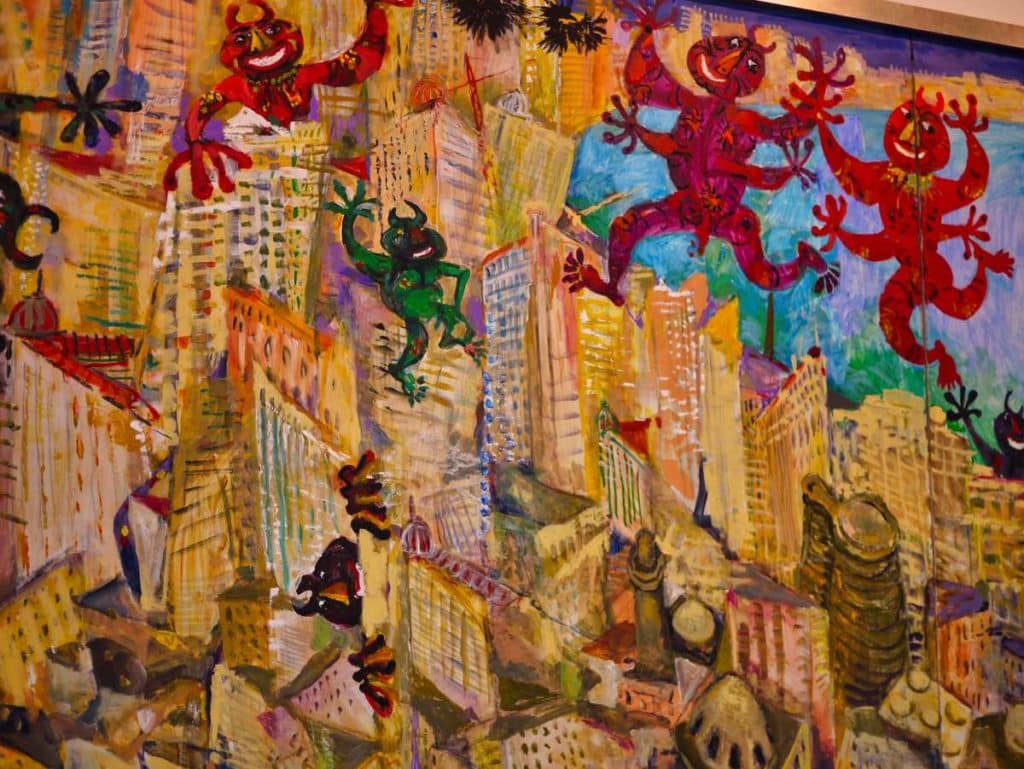
In the Museum of Modern Art in Baku, too, paintings by Babayev are on display alongside paintings and sculptures of Azerbaijani modernism. Most of the nearly 800 exhibits are from the second half of the 20th century, primarily from the avant-garde period, the 1960s and 1970s. Here you can also see other side In these paintings nature plays the main role. Trees, sky and earth seem comparatively peaceful and harmless. The most impressive, large-format tableau entitled ” Above the rooftops of the old city of Baku”, however, shows the Islamic old city, in whose alleys the goblins with the typical devil’s ears are up to mischief.
Book recommendations
You want to read more? Then we recommend the following books about Azerbaijan.
- Johenning, Heike Maria (Author)
Everything you need to know about Azerbaijan’s troubled past, presented in a nutshell.
- Heike Maria Johenning (Author)
You want to know more about Azerbaijan’s culture? Than this book is the right choice!
- Holger Kretzschmar (Author)
Classical travel guide, that also covers Armenia and Georgia.
To prepare your trip, it is best to learn a few words in Azerbaijani. This book is great for beginners!
- Said, Kurban (Author)
This compendium should probably contain pretty much all the dishes that exist in Azerbaijani cuisine. Wonderfully designed and over 800 pages strong!
Portrait of Azerbaijan, presenting the country in all its facets.
How did you like this article about the Caucasian Picasso Rasim Babayev? Let us know and write us a comment!

